The 40 Best Nintendo Switch Games (March 2023)
The Switch might have just celebrated its sixth birthday, but Nintendo’s little box is still thriving. Animal Crossing and the pandemic helped kick it into overdrive, and that momentum has kept up throughout 2022. Not only does Nintendo continue to pump out some of the best games for its own console, but the Switch has become home to some of the best multiplatform games released over the last few years. Like, Disco Elysium, one of our favorites of 2019, and, if anything, a game we actually underrated at the time, recently found what might be its ideal home on the Switch. With a constant stream of great software, and the addition of an OLED screen, there’s a lot of juice left in the Switch.
Everybody with a Switch knows about Animal Crossing and Super Mario Odyssey, but there are many great games for the system beyond Nintendo’s core classics. With success comes support, and the Switch has consistently seen far more support from other companies than the Wii U ever saw after its launch. The Switch’s digital eShop is full of games that you can download, and the Switch racks at most retailers easily outnumber the Wii U’s at its peak. If you need help cutting through the clutter, let us point you towards the best of the best. Here are the 40 games you most need to play for the Nintendo Switch.
All entries written by Garrett Martin except where noted.
40. Snipperclips

Snipperclips is an adorable puzzle game that focuses on partnership and cooperation, as you and a friend control two papercraft buddies who are trying to arrange themselves in specific shapes or perform certain actions in order to move on to the next screen. You can rotate and tilt them freely into the necessary positions, and even use them to cut each other into different shapes in order to accomplish whatever goals are before you. That might mean perfectly filling an outline on the screen, or snipping one character into a point that they can use to pop a balloon, or even just balancing a basketball or pencil as you carry it from one edge to the other. A lot of co-op games barely require you to acknowledge your partner, but Snipperclips practically forces you to talk through each scenario, like you’re working together on a jigsaw puzzle or at an “escape the room” style event.
39. Octopath Traveler
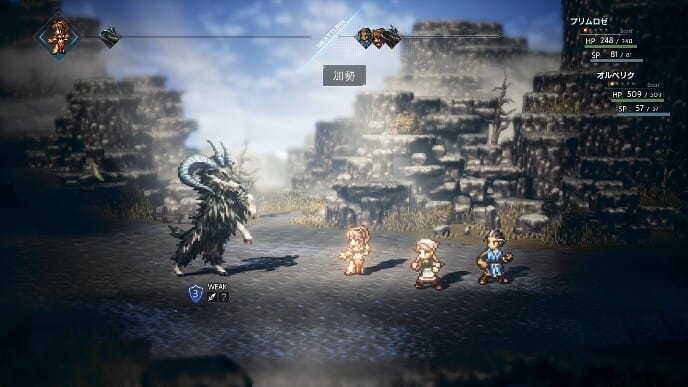
Octopath Traveler’s choice to break away from the norm and explore an open world JRPG hybrid was a bold move, and while it doesn’t quite come through the other end unscathed, the game does do a great job at keeping you engaged. The characters are all likeable and grounded in the world around them, and each story stays within its own lane and manages to tell a much more personal tale rather than one of some grand world-spanning intrigue. You’d be forgiven for thinking Octopath Traveler was much like the titles that came before it, telling a singular focused story of adventure, when the reality is that the game offers up a collection of tales. It’s an anthology of mini adventures that span the length and breadth of the genre’s own history.—Andy Moore
38. Dragon Ball FighterZ
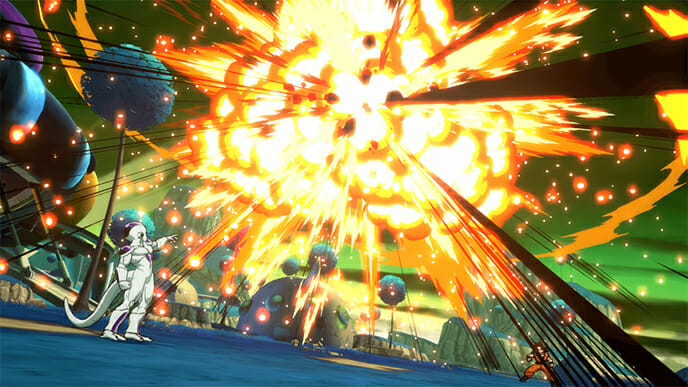
Dragon Ball FighterZ is both the fighting game and Dragon Ball spin-off I never realized I always wanted. The production values are better, and the narrative tension is vastly improved. Given how Dragon Ball FighterZ amps up the drama on existing Dragon Ball storylines, increases engagement by allowing the player to take dialogue sequences at their own pace, and puts a polished, beautiful spin on the old cartoon, this isn’t just my favorite Dragon Ball game. It’s my favorite Dragon Ball anything.—Holly Green
37. Arms

The central conceit of Arms is ineffably bizarre—one day people suddenly have springs for arms, so they start to punch each other a lot. And yet it’s pretty much exactly what you’d expect from a Nintendo fighting game: it’s cute, charming, relentlessly upbeat, and relatively simple to understand but almost torturously difficult to truly excel at. It makes better use of the Joy-Con’s motion controls than any other Switch game, to boot. It might feel a little slight—something that might be rectified by upcoming updates—but for the first big new Nintendo idea on the Switch, Arms is a hit.
36. Dandara
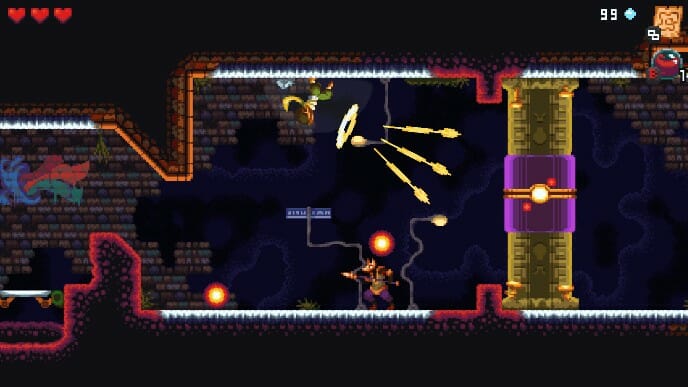
Long Hat House’s first game might play fast and loose with history—its hero, Dandara, is a real-life figure from Brazilian history—but its Metroid-style design and unique approach to motion make it compulsively playable. It’s part myth, part dream, all wrapped up in an occasionally psychedelic sci-fi action game heavily indebted to the aesthetics of the ‘80s and early ‘90s.
35. Hyper Light Drifter
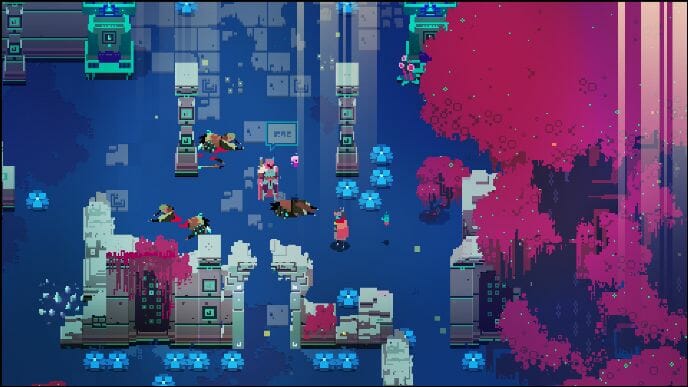
The world of Hyper Light Drifter is a rotting corpse, and the lizard people or bear people or bird people of that world continue to dwell in the ruins of some kind of technologically advanced civilization. You, embodying the player character, are haunted by your own death, and you’re haunted by some kind of force that keeps this world in its state of decay. It is unclear whether progress in the game means finally killing the world or setting it free, and that ambivalence sticks with me even now.—Cameron Kunzelman
34. Golf Story
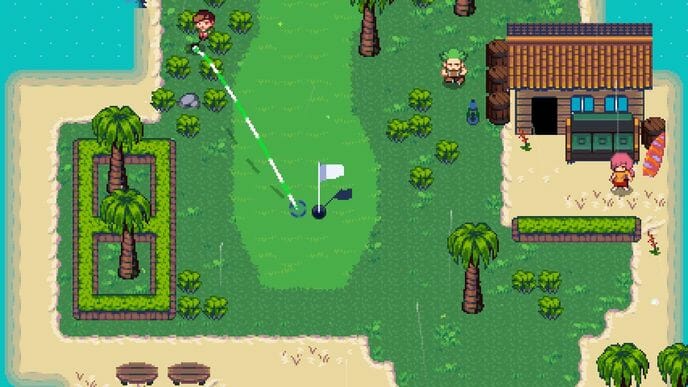
This charming curiosity turns the always-dull world of golf into a top-notch role-playing game. It’s pretty much just what that sounds like: “battles” are golf matches instead of fights, you earn experience points and money that can be used to improve your golf game, etc. It’s not just the novelty of the concept or the classic videogame golf action that makes us recommend this one, but the smart, funny script, which features some of the best games writing in years.
33. Minit
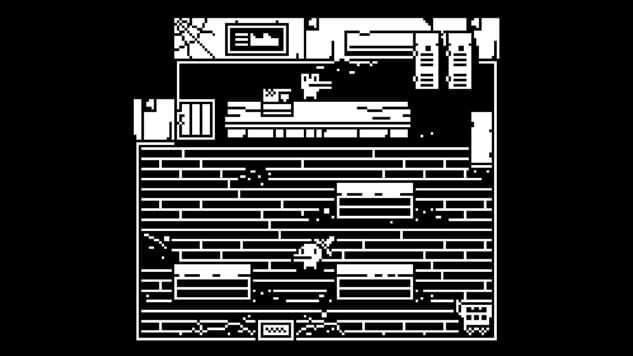
Minit is an adventure with a twist and also a critique of capital split up into tiny bite-sized chunks and told through adorable animals in a sparsely drawn fantasy land. After enough stop and start minutes you’ll realize a factory is running roughshod over this place, polluting the land and working some of its employees to the bone while firing others whose jobs can now be done by machines. Behind it all is a maniacal manager prioritizing productivity over all else. After all these minutes and all these lives the true story reveals itself, and to reach the end you have to collect item after item, life after life, to eventually have the skills necessary to grind the factory to a halt. Even after realizing this it’ll take many minutes and many lives to finish everything you know you need to do, tiny bits of incremental progress in-between passages of rote, mundane, repetitive busy work. If it starts to feel like a job, well, maybe that’s the game’s point. The factory is Minit itself, its employees all of us who play the game, and its dictatorial boss the developers who put us through these paces again and again and again in hopes of the smallest iota of progress. Like the unending and uncaring work shifts that eat up our days until we die, we expend most of our vital energy redoing the same soul-killing nonsense over and over. It is one of the most effective metaphors for the exploitation of the working class seen in videogames. The minutes pass, we experience multiple tiny deaths every day doing the job we’re expected to do. And we press a button, and we do it again.
32. Cave Story+
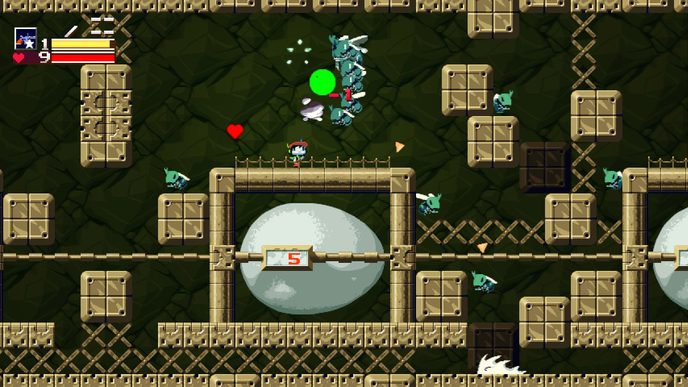
Easily the oldest game on this list, the original Cave Story dates back to 2004. Essentially a homemade tribute to Metroid and Castlevania, that PC version was updated for the Wii and DS in 2010, and then enhanced for the PC and 3DS under the name Cave Story+ a year later. That’s the version that came to the Switch earlier this year. The same traits that made it so great in all its previous incarnations are present in the Switch port, but with the extra benefit of being playable on both a TV and on the go. This is the kind of long, intricate, Metroid-style game that’s incredibly tough to put down, making it a perfect fit on the portable Switch.
31. Cult of the Lamb

From the very moment Cult of the Lamb begins, players embark on a rollicking, deceptively cute, but ultimately sinister journey through the lands of the Old Faith, and it never lets up. Within seconds of gaining control of the game, the player is executed for being a potential vessel for The One Who Waits, a god who’s been bound by chains. This fallen god saves the player before charging them, a literal sacrificial lamb, with taking up a crown and restoring them to power. From there, players engage in a lot of frankly dubious behavior, indoctrinating dissidents of the Old Faith into a cult and deciding how best to exploit them.
Cult of the Lamb’s greatest strength might be its honesty. Action games are about this absolute physical dominance over other things and people around you, and management sims have always been about pulling on threads and watching systems big and small do your bidding. In a sense, Cult of the Lamb is this wholly self-aware marriage of two distinct, but intrinsically tied, genres about the order of things, and just immediately inserts you at the top of that hierarchy, laying it all bare. It drops all pretenses and weaves conquest and violence of various forms (spiritual, physical, and systemic) into its systems and simple story very satisfyingly. At the end of the day, your cult leader is little but an avatar for destruction masquerading as a hero. How much more of a videogame could you be at that point? And for that frankness alone, Cult of the Lamb is more than deserving of high marks.—Moises Taveras
30. Monster Hunter Rise
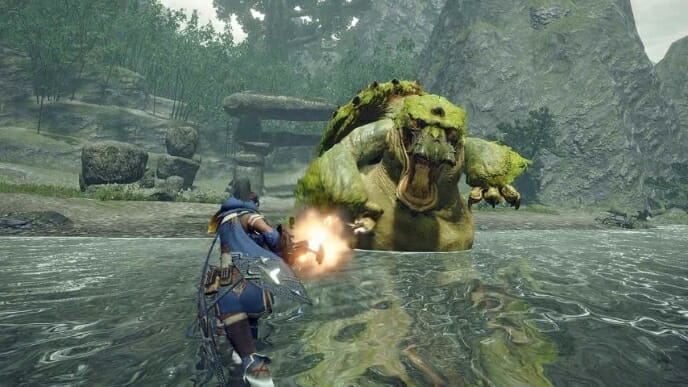
Somehow what turned me off of Monster Hunter games a decade ago has turned into a virtue for me today. Monster Hunter Rise is basically the perfect game for me right now, at the end of the pandemic. The quest structure can still be repetitive, but I now greatly appreciate how segmented it is. Most missions have a 50 minute time limit, but take far less time than that to complete; unlike pretty much every other role-playing game ever made, I can pick up Rise, start a quest, and know that I’ll hit a natural stopping point in under an hour (and often in under 20 minutes). Despite being a really long game, Rise doesn’t feel as much like a commitment as games that are more open-ended. That ease of popping in and out makes Rise a perfect fit for my schedule, where I have to juggle my gaming time with my other responsibilities for work and other interests that I try to get to every day. And Rise’s clear-cut, straight-forward approach to progress makes every minute I spend in the game feel important—which can’t always be said about other time-sucking RPGs.
29. Kirby and the Forgotten Land
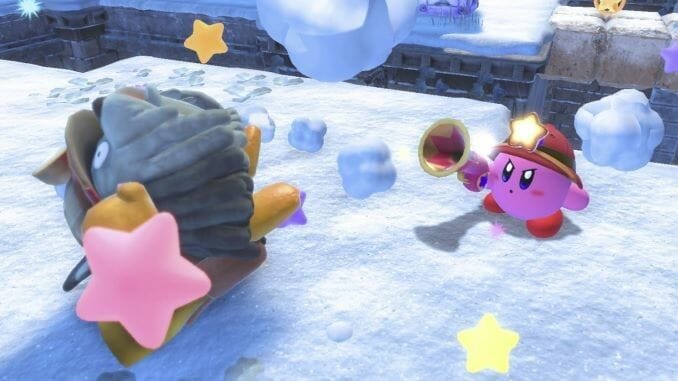
Forgotten Land is approachable for less experienced players, and yet stuffed with reasons for veteran gamers to stay both interested and invested. It’s adorable at basically all moments, and it’s lovely to just look at the way Kirby moves around and interacts with his environment. It manages to straddle the line between valuing and carefully adapting the Kirby that was, while completely revamping what you thought Kirby could even be. Maybe it won’t sell you on the franchise if you aren’t already buying, but if any of the available titles were going to change your mind on that score, it’s this one, and well worth finding out if it will do the trick for you. After all, who doesn’t want to feel joy?—Marc Normandin
28. Signalis

While Signalis fits into a larger trend of games that emulate PSX-era survival horror, its bold aesthetic choices and spellbinding storytelling help push it past its influences to create something singular. Its gameplay successfully channels some of the usual suspects like Resident Evil(2002) and Silent Hill 2 as your forage for keys, avoid Crimson Head-esque reviving zombies, and repeatedly backtrack to solve puzzles. However, its greatest selling point is that it has one of the most compelling videogame narratives of the year, its ruminations on death, identity, and accepting loss conveyed through cryptic symbolism and recurring cycles of pain. By constantly switching settings, artistic styles, and perspectives, it creates a disorienting headspace that emphasizes the confusion of its protagonist, slowly revealing the meaning of its recurring images until the horrible weight of it all comes crashing down. It’s a brainworm of a love story that I can’t get off my mind.—Elijah Gonzalez
27. Stardew Valley
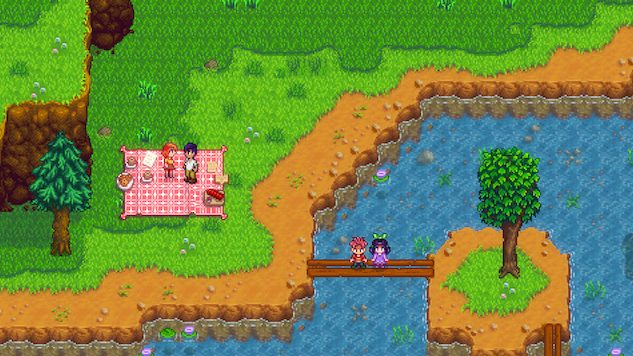
For all the nostalgia-driven indie gaming experiences we’ve had over the past decade, the long-running and much-loved world of Harvest Moon had gone curiously neglected until more recently. Stardew Valley is easily the best of these virtual farming love-letters, making vast improvements on core mechanics while adding its own unique flavor. It’s faithful enough that devoted Harvest Moon/Story of Seasons fans fell in love with it, but approachable enough that it introduced an entirely new group of gamers to the joys of a pixellated country life.—Janine Hawkins
26. Super Mario Maker 2
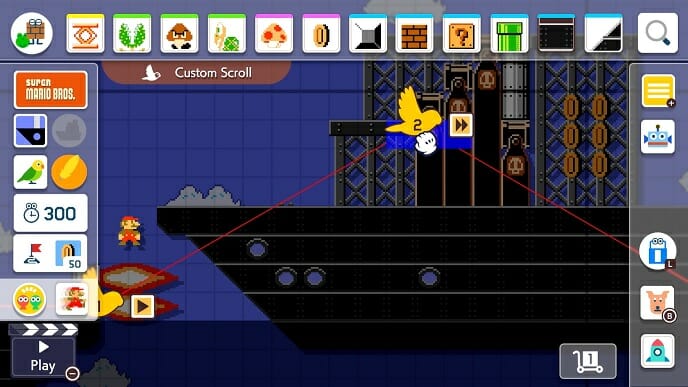
Super Mario Maker 2 has the same impact as the original, only with an updated set of options. It still leaves Mario exposed, not just giving you the tools to design your own levels but walking you through the process step by step. Sure, it’s not how these games are really made—you won’t be doing any coding or creating any art assets—but you can still learn some of the basics of level design, and have the freedom to follow or flout those rules as you see fit.
Freedom is the foundation of Super Mario Maker 2, and that freedom is a big reason why it’ll be hard to go backwards to a traditional side-scrolling Mario game after this. It lets us break the game apart and put it back however we see fit, and no matter how seamlessly Nintendo glues it all back together in the future, we’ll still see those cracks and see how everything fits into place. Even if Nintendo was still designing side-scrolling Mario levels as ingeniously as they were in the ‘80s and ‘90s, we would simply know too much to once again feel the way we used to feel about them.
25. Ape Out
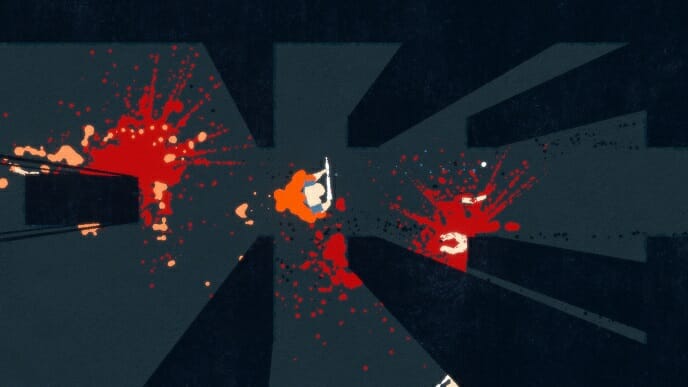
Slaughtering tons of dudes has never felt so morally appropriate before. Ape Out makes a statement about animal abuse by focusing on a gorilla lab subject’s violent escape from captivity. It has the mechanical precision and deceptively deep game loop of a classic arcade game, but with a gorgeous aesthetic based on Saul Bass art and jazz percussion. Levels are packaged as if they’re tracks on old LPs, and the whole game looks like the cover to Miles Davis’s greatest hits come to life. It looks and sounds amazing, feels good to play, and has a just and socially relevant message, to boot.
24. Umurangi Generation
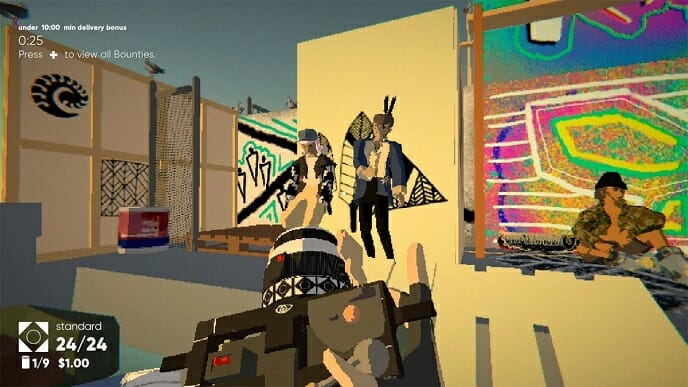
Does this sound familiar? A city’s in lockdown after a crisis, its citizens wearing face masks for their own health. Heavily armed cops patrol streets rife with anti-cop graffiti. Institutions have violated their compact with the people, and those in power came down hard on those who rose up against them. It’s real life around the world right now, but it’s also the setting for Umurangi Generation, a beautiful photo game that contrasts the peacefulness of taking photos and making art with the fear and violence of a police state, and which came out a week before the protests inspired by George Floyd’s murder went global. The societal issues that people are protesting are timeless, sadly, and embedded at the very foundation of our culture, which means a game like Umurangi will always be timely—at least until society is transformed to the point of being unrecognizable. Playing Umurangi over the last few days can be taxing, especially if you turn to games simply to shut out the world around you and ignore what’s happening. The added context of the last week also makes it exhilarating, though, and in a way that leaves me feeling a bit guilty and shameful—like a tourist who, instead of documenting real life oppression, is living in a fictionalized version of it. The events that inspired Umurangi’s crisis are environmental—designer Naphtali Faulkner’s mother’s house was destroyed during the bush fires that raged through Australia last year, and the game’s dark red skies hint at a different kind of trauma than the one currently happening in America and elsewhere. It’s one that still looms above all of society, though; if we don’t tear our own cities down first, the worsening climate problem inevitably will. Despite the different disasters, and even with its futuristic, sci-fi trappings, Umurangi Generation is a vital, current, powerful game that uncannily captures the mood of its time.
23. If Found
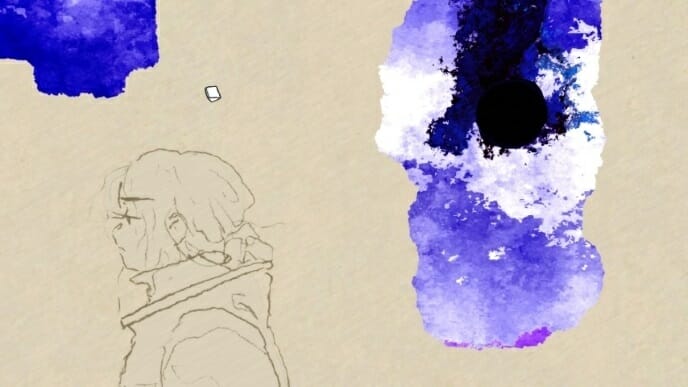
If Found isn’t a happy story. It’s an honest one. There’s a good chance you will cry, perhaps more than once, but there are also moments of joy, love and triumph. Despite the artistry of its presentation, and despite a recurring sci-fi metaphor that adds a bit of depth to the story but never quite fully connects, this is a low-key, modest, human affair. Its observations about family and relationships are touching, grounded and real, avoiding melodrama or outsized pronouncements about human nature. Much of it is universal, sure, but the focus remains on its lead character Kasio and how her merely being who she is can disrupt her relationships with her family and the world around her. It’s a character study of a specific person in a specific time and place, but whose pains and struggle ring true throughout the ages.
22. Citizen Sleeper
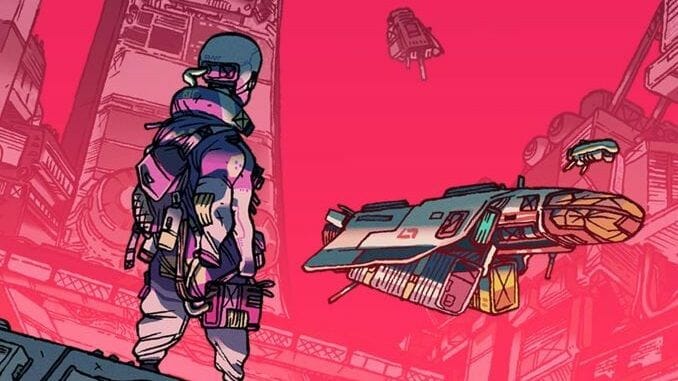
You can think of Citizen Sleeper as a sort of digital board game set in a sci-fi dystopia beset by end-stage capitalism and all the rampant dehumanization that entails. It’s a game about work and death where the only levity comes from the relationships we make with others—yes, the friends we made along the way, but not nearly as banal or obvious as that sounds. It questions what it means to be a person in a system that inherently subjugates personhood to corporations and wealth, and it probably won’t surprise you that the answers it lands on aren’t always the most optimistic or uplifting. Here at Paste Cameron Kunzelman described its “melancholy realism” as part of a trend alongside other story-driven games that are largely hostile to the dominance of capitalism, and it echoes the impossibility of thinking seriously about this medium, this industry, and, well, every aspect of society today without discussing the impersonal economic system that drives it all. It’s a heady RPG that respects your time and intelligence, and one of this year’s must-play games.
21. Neon White
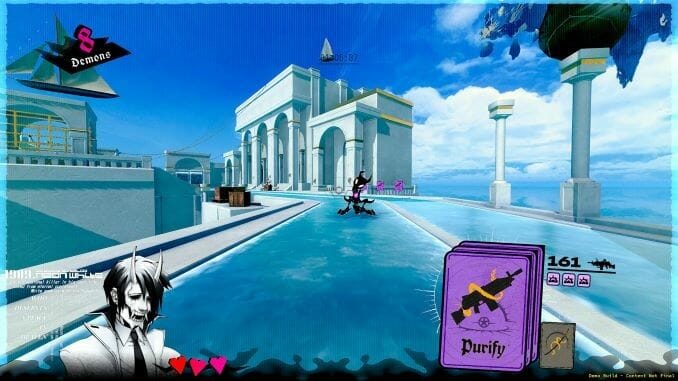
Neon White is pure motion. It might look like a first-person shooter—it’s in first person and you shoot a lot—but it’s all in service of the constant heedless rush at the game’s heart. Almost every time you shoot a demon it’ll be to acquire whatever kinetic ability it gives you, which you will almost immediately use to jump a little higher or rush forward a little faster or to literally grenade yourself dozens of feet into the sky to reach the next platform. You’re not here to shoot, per se, but to get from point A to point B as quickly as possible, and the shooting merely facilitates that. When you fully tap into its flow Neon White is about as exhilarating as videogames get, becoming an extension of your own nervous system as you effortlessly string moves together while trying to shave microseconds off your best time. And on top of its mechanical excellence it also has a story and cast of characters so well-written that I’m able to overlook its unfortunate reliance on an aesthetic and character tropes right out of anime. Neon White combines arcade elegance and extreme replayability with a genuinely thoughtful and surprising story, making it almost the best game of 2022 so far. It’s the only game that finally, fully broke Elden Ring’s hold over me; I haven’t set foot in the Lands Between since my first time sprinting through Heaven.
20. Hollow Knight
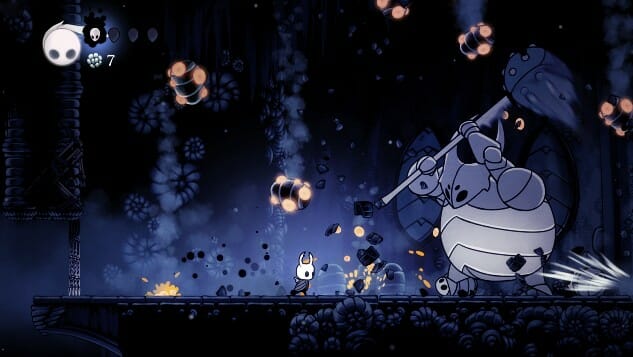
Any game can be hard. That’s not what makes Hollow Knight so great, at least not alone. Team Cherry’s first game is a charming Metroid-style game full of warmth, humor, precise platforming, and, yes, brutal, forbidding difficulty that’ll make you think of a Souls game. (Look, I know that’s a cliche, but writers wouldn’t make that reference so often if it wasn’t so often true.) Hollow Knight is a great example of how to reference the past without dwelling on it—of how to churn ideas and mechanics and aesthetics from previous generations of videogames into something new and original.
19. Celeste

Maddy Thorson’s follow-up to Towerfall employs a familiar aesthetic and language from videogames past to tell a story about mental health and self-actualization, using the mountain the game is named after as a representation of a young woman’s struggles with depression and self-doubt. Celeste is an inspired triumph, with art that recalls the early ‘90s, and requiring a precision to navigate its levels that comes straight out of the heyday of platforming. The vibrant use of color and warm, stylistically varied score elevate the retro aesthetic beyond mere homage. It’s a touching and occasionally insightful depiction of what it’s like to live with anxiety and depression.
18. Into the Breach
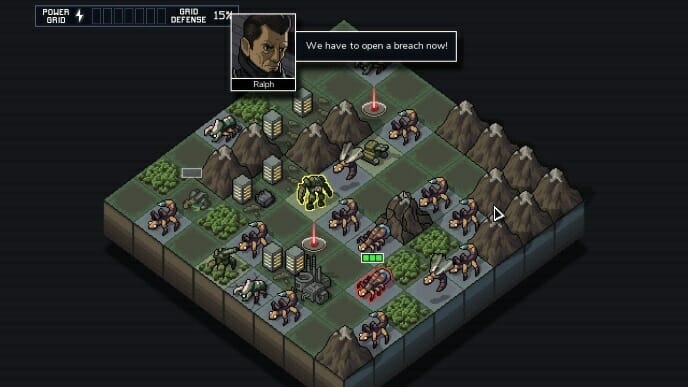
Into The Breach is interested in you, as a player, gaining skills and developing new ways of thinking about the puzzle-like battles it puts in front of you. The island regions threatened by the Vek are small tactical boards, and you control a small cohort of giant, Pacific Rim-style robots who are there to smash and push their enemies around. Critically, these giant robots have mass, and Breach is very much committed to showing that big stuff smacking into other things has real effects. The idea is to prevent the Vek from attacking civilian buildings, prevent them from killing your mechs, and to kill them. Importantly, the game’s concerns are in that order.
That’s the puzzle-y part of the game. Each map has a turn counter that’s slowly ticking down, and at the end of it the remaining Vek will disappear. Into The Breach’s most interesting qualities come from the fact that you do not have to kill your enemies to win the game. You don’t have to annihilate each and every Vek on a time limit, and you don’t ever have to put your mechs in too much danger. You just need to be able to use your punching, shooting, artillery-firing robots to keep scooching enemy Vek around until the game is over.—Cameron Kunzelman
17. Xenoblade Chronicles 3

Xenoblade Chronicles 3 is a worthy addition to the franchise, one that succeeds in its mission as a culmination of the Xenoverse so far, and one that, despite building on top of pre-existing systems with even more of them, manages to streamline itself enough and in enough ways that it wouldn’t be a surprise for it to become the best-selling title in the series. It turns out you can sell philosophy to the kids, so long as that philosophy also has mechs. Monolith has come a long way since Xenogears and Squaresoft, and Xenoblade Chronicles 3 is evidence they’re still going to have places to go without needing to find a new developmental process or bosses, too. Whether it’s the “best” Xenoblade or not doesn’t matter as much as the fact that it fits in wonderfully with what already existed, and ensures that we should be looking forward to whatever those next steps for the series end up being, too.—Marc Normandin
16. Mario Kart 8 Deluxe

This special enhanced edition of the Wii U smash was one of the first big tests for the Switch. How would a game initially built to be played exclusively on a console strapped to a TV translate to a system made to be taken anywhere? The answer: about as well as anybody could expect. Mario Kart 8 Deluxe collected every scrap of bonus content for one of the best games of the decade, added a nostalgic return to a classic battle mode, and made all of it perfectly portable thanks to the Switch’s unique capabilities. If anybody was worried that Breath of the Wild would be a one-hit wonder for the Switch, Mario Kart 8 Deluxe gave them hope.
15. Super Smash Bros. Ultimate
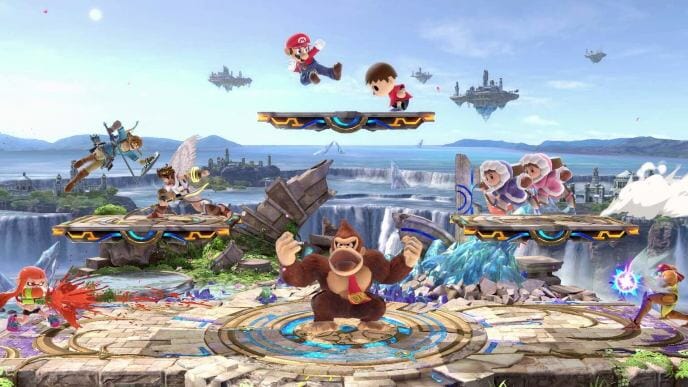
Nintendo’s latest violent ode to nostalgia might have more pure content than any other game we’ve seen this decade. It’s got this many characters, and that many stages, and all those other characters who pop up as trophies and spirits (whatever those are). Music? This baby’s got every song you’ve ever heard in a videogame squeezed up inside of it. If you get stressed out when faced with a decision, a fully unlocked Smash Bros. Ultimate character selection screen will probably turn your hair white. Of course a game isn’t good because there’s a lot of it—it’s good because it’s, you know, good. And as a casual Smash player since the very first game came out, I have definitely enjoyed my time inflicting brutal punishment upon some of the most lovable videogame characters ever devised. Ultimate is about as replayable as videogames get.
14. Undertale
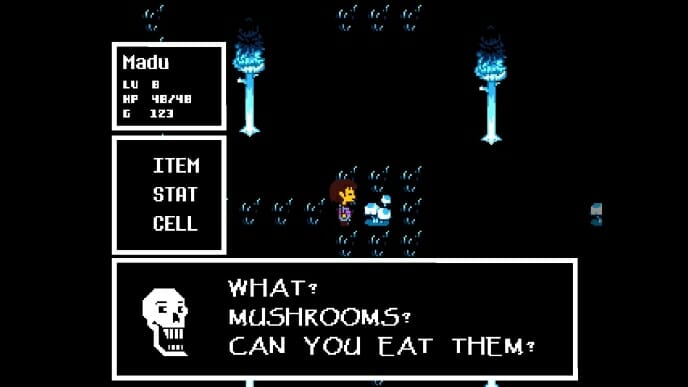
Undertale is a special game, the likes of which come along only once in a great while. It’s a look into a parallel universe—one where videogames have realized a bit more of their potential than, say, the AAA industry has in our world. It’s a game that can make you laugh while teary-eyed, where both competing emotions are natural and genuine. It’s fun, it’s sweet; it’s an experience that will stay with you long after you’ve put the game away.—Bryce Duzan
13. Baba Is You

Arvi Teikari’s ingenious puzzler churns spatial awareness and the building blocks of communication together to form one of the most difficult yet enriching games of the year. It might have Sokoban at its core—yes, you push and slide objects across the screen—but instead of moving boxes around to find an exit, you’re moving words and symbols that can redefine the nature and behavior of everything else on the screen. The title might make no sense before you play it, but it’s actually the equation that drives the heart of the game: Baba is you, as long as the words “Baba,” “is” and “you” are arranged in the right order. From that basic premise it explodes out into a series of widely varied, almost never simple brainteasers that will keep you engrossed for days, if not weeks.
12. Splatoon 2
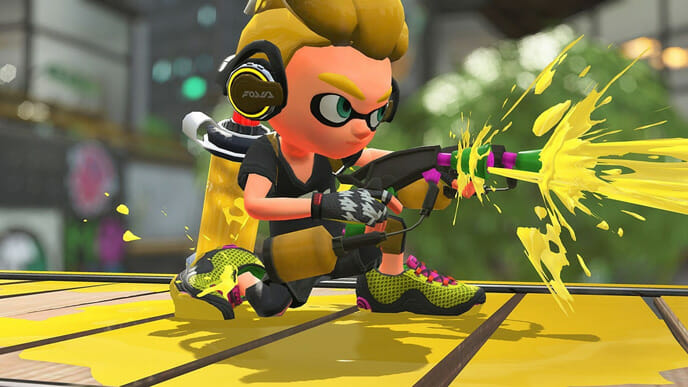
Some have dinged this one a bit (including our own review) for sticking too closely to the formula established by the Wii U original. It’s true that, at first, it can feel more like a remake than a sequel. In time though its unique attributes become more apparent, from the variety of weapons, to the new maps, to the various multiplayer modes that supplement the standard Turf War. Splatoon 2 might not break a lot of ground but it’s one of the most purely fun games to come out for any system in years.
11. Fire Emblem: Three Houses
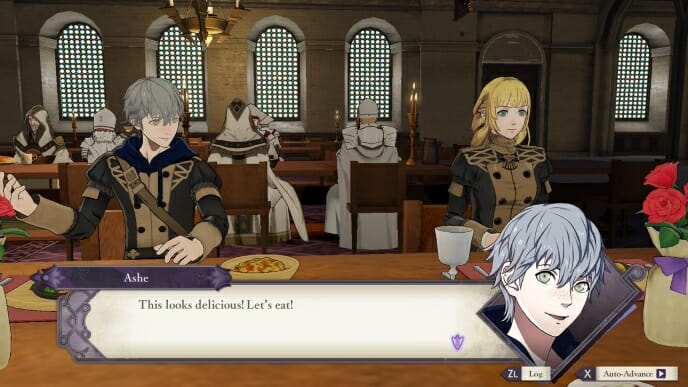
This might be the best game I know I’ll never actually finish. The latest Fire Emblem game is massive. That’s no surprise—Fire Emblem games always eat up a lot of time—but Three Houses has fully established the relatively new social aspects of the series as a true equal to the tactical battles that have always been the main draw. I’ve spent at least as much time teaching my students, learning about their lives and personalities, and trying to make them happy as I have on the battlefield—and no, that is not in any way a problem. With class consciousness as a narrative backdrop, Three Houses is less of a straight-forward story than an impressionistic look at a large crew of characters united by tradition, obligation, and the need to save society as they know it—maybe while reforming it. It’s a smart, charming, sometimes brutal experience, and one whose 80 hours length per house guarantees I’ll never fully experience it. One house is good enough for me—unless every publisher in the business wants to take pity on us and not release any other games until, let’s say, December.
10. Return of the Obra Dinn

Blood doesn’t fade that easily. Obra Dinn might be rendered in the stark monochrome of an early Macintosh game, but that blood still jumps out at you. And not just the blood of the sailors and passengers whose murders you try to solve aboard the empty ship they perished on, but the blood of all the people and cultures cut down and ground into profits by the force that sent that East India Company ship on its journey in the first place: colonialism. Lucas Pope’s follow-up to Papers, Please might feel like a game of deduction at first, an especially complex game of Clue, but it unmistakably grows into a critique of Europe’s exploitation of native populations without ever becoming too obvious or heavy-handed about it. It’s an inherently political game that never becomes didactic or boring, and more proof that interactive media like games can be persuasive and educational without feeling like a lecture.
9. Live A Live
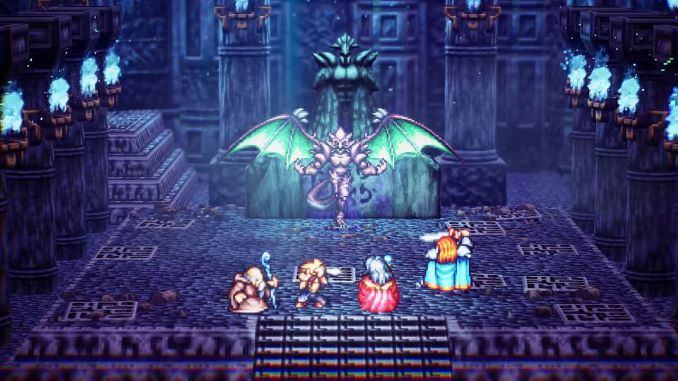
Live A Live still has it. Takashi Tokita led a young team of fans at Historia, Inc. to create a version of a classic as vibrant and exciting and crucially unique in Square’s catalog today as it was in 1994. Released between Final Fantasy VI and Chrono Trigger and passed over for translation due to its technically less impressive sprite work compared to its flagship siblings, it shines today as the celebration of a cult classic, with a worldwide legacy and influence as an important milestone in an entire alternate history of RPGs. Live A Live is the exact opposite of the unique masterpiece that’s so good it ruins other games: it is a heartfelt tribute to everything there is to love about the RPG format, and will leave you invigorated and excited not just to play more RPGs, but to watch more Kung Fu movies, more Westerns, more classic Sci-Fi. If you’ve even a passing interest in the genre, it is simply a must play.—Jackson Tyler
8. Disco Elysium

Disco Elysium is a gloriously complex isometric RPG, starring a drug-addicted detective with memory issues in a town that has seen better days, that takes its cues from classics like Fallout or Wasteland. Stressing out about every last detail distracts from the tremendous depth built into the world of Disco Elysium, and I’m ready to stop over-preparing and otherwise manifesting my anxiety in videogames. If anything, it will make additional playthroughs, customized by the game’s peculiar set of character skills, an appealing possibility. I look forward to all the secrets that will soon unravel about Disco Elysium. But even better, I’m feeling comfortable with the mystery.—Holly Green
7. Metroid Dread
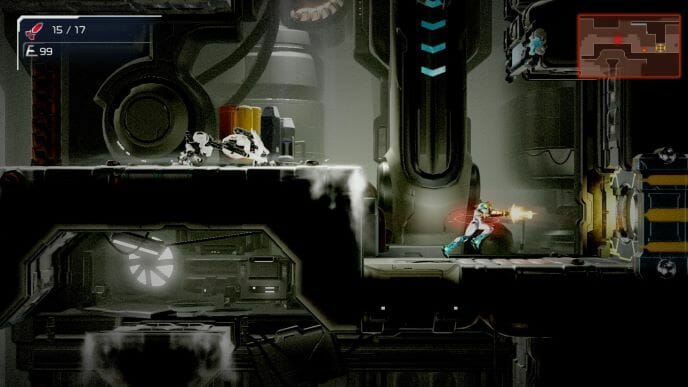
Samus’ return to two dimensions restores something essential to the appeal of the original Metroid, and it’s right there in the title: yep, we’re talking about dread. And not just the claustrophobia or paranoia you expect when you’re the only living thing not trying to kill you on the whole damn planet, but legitimate terror as you’re being hunted by an unbeatable foe that will immediately kill you once caught. Being stalked by an E.M.M.I. is almost as frightening as your first encounter with a Metroid in Tourian back on the NES, injecting true horror into a game that ably captures the magic at the heart of this series. Metroid Dread gives the people what they want, resulting in the best Metroid game since the Prime series.
6. Animal Crossing: New Horizons
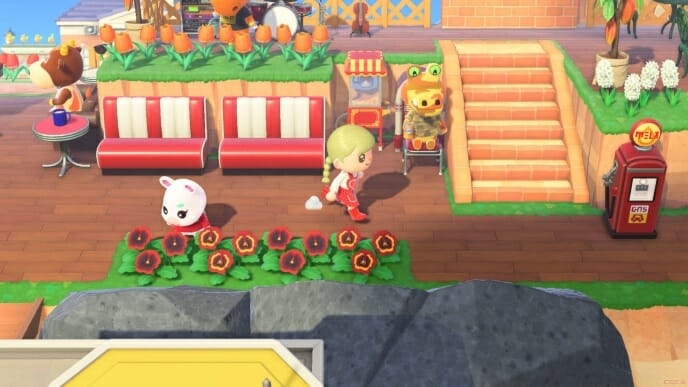
Originally Animal Crossing applied almost no pressure to the player. You could pay off your house, or not, and that was pretty much it. Much has changed since 2002, though. Almost everything you do in New Horizons has the residue of productivity on it, even if you’re trying to be as aimless as possible. Instead of playing games within this game, the only way to not accidentally be productive is to literally do nothing—to sit in a chair, or lay on a hammock, and put the controller down. To sit quietly with your own thoughts—thoughts that exist fully outside of your Nintendo Switch.
The fact that you can do that, though, is an example of the confidence within Animal Crossing: New Horizons. Nintendo might have ramped up the numbers and the to-do lists, all the tasks and chores that make New Horizons feel like one of the last outposts of whatever notions of normalcy we might’ve once had, but you can still tune that out and live within your own head for a spell. That head might naturally drift towards the hellishly contorted world we live in, and not the delightfully cartoonish one of Animal Crossing, but escapism is overrated anyway. I’d rather worry about every aspect of modern living while quietly reflecting on the rhythmic roar of a videogame ocean than while sitting slackjawed in a living room I won’t ever be able to leave again. Give me these New Horizons—rigid, commercial, and staid—over the chaos of the last decade.
5. Super Mario Odyssey
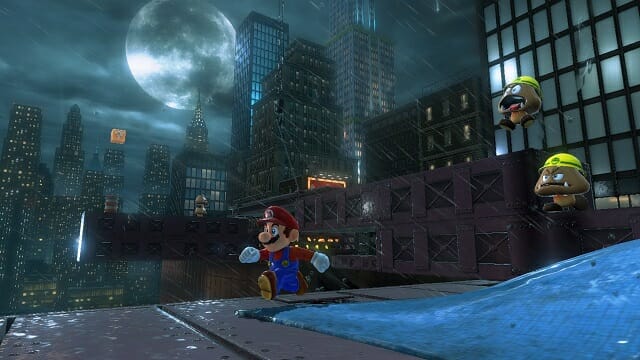
Bicker about what makes up a “core” Mario game all you want. All I know is that Super Mario Odyssey is one of the two or three best games to ever have that lovable little guy’s name in the title. It is every bit as powerful as Super Mario Galaxy or Super Mario Bros. 3, the previous high-water marks for Nintendo’s mascot, and for the platformer genre in general. Odyssey is an overwhelming cornucopia of pure joy, full of the kind of freedom typically found in open world games but with a constant chain of clear objectives and attainable goals pulling you ever deeper into its roster of candy-colored kingdoms. It’s a perfect bookmark to Nintendo’s other major Switch game of 2017, The Legend of Zelda: Breath of the Wild: both recraft a classic cornerstone of the entire medium into an effortlessly enjoyable and crucially contemporary masterpiece that unites all eras of gaming history.
4. Hades

What makes Hades so great—and what elevates it above other roguelikes—is how it creates a consistent sense of progress even as you keep dying and restarting. Part of that is mechanical—although you lose all the boons bestowed upon you by the Greek gods after a run ends, along with other power-ups acquired during your journeys through the underworld, there are a few things you do hang on to when you return to the game’s hub world. More important than that, though, is how the game’s narrative unfolds between runs, driving you to keep playing through whatever frustration you might feel in hopes of learning more about the game’s story and characters.
Between every run in Hades your character, Zagreus, returns to his home—the palace of his father, Hades, the God of the Dead. Yep, he’s another rich kid who feels his first bit of angst and immediately starts slumming it. Here you can interact with various characters, upgrade the decor, unlock new permanent perks, and practice with the game’s small arsenal of weapons. Every time you return the characters who live here have new things to say, slowly unraveling their own storylines and deepening their relationships with Zagreus. And given that the writing in Hades is as consistently sharp and human as it’s been in all of Supergiant’s games, getting to talk to these characters alone is a reason to actually look forward to dying in this game.
3. Kentucky Route Zero: TV Edition

Cardboard Computer’s exploration into the mysteries of the mundane finally came to an end in early 2020, making its Switch debut at the same time. This magical realist adventure combines the mythological folkways of “old weird America”—here personified by a stretch of rural Kentucky that regularly phases between the familiar and unearthly—with a pointed critique of how capitalism reduces everybody to interchangeable commodities. Workers grind themselves to bones to pay off their “debt” to their employers, pharmaceutical companies basically own the doctors who prescribe their medicine, and an amiable truck driver gets lost on a routine delivery with no end in sight. It’s a beautiful bit of inspired genius that’s perfect on the Switch.
2. Thumper

Thumper’s difficulty is suffocating. Along with the oppressive music and the stark graphics, it turns the game into a claustrophobic, stressful, frightening experience. It rattles around inside my brain when I’m not playing it, its velocity and brutality careening throughout as I try to unwind after playing. Thumper taps into art’s ability to alter our consciousness, introducing a new reality for us to get lost in, and it’s not afraid to let this dream world look and feel like a nightmare. Most rhythm games want to replicate the best time you could possibly have at a rave; Thumper wants you to feel like you’re shaking on the floor of a bathroom stall, praying for those weird shapes and sounds that surround you to go away. It is an essentially perfect realization of its own unique goals and concerns, and a game we’ll be playing and celebrating for decades.
1. The Legend of Zelda: Breath of the Wild
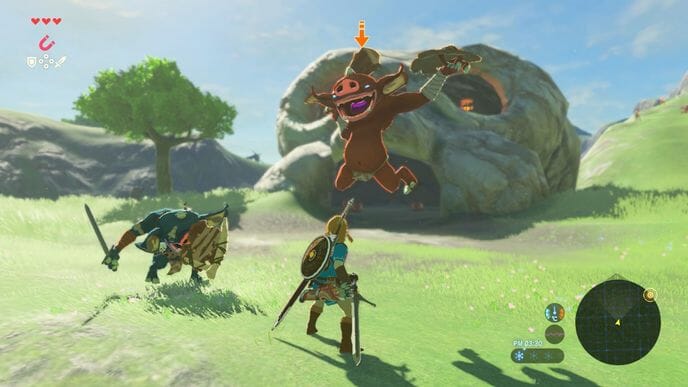
[Breath of the Wild is] a fresh approach to what Zelda games have striven for since the very beginning. The depth you expect, the open exploration and constant sense of discovery the series is known for, are here in perhaps greater effect than ever before, but with the systems and mechanics that drive the moment-to-moment action heavily overhauled. The result is a Zelda that feels unmistakably like a Zelda, but that also breathes new life into the venerable classic.
Garrett Martin edits Paste’s games and comedy sections. He’s on Twitter @grmartin.
Paste











